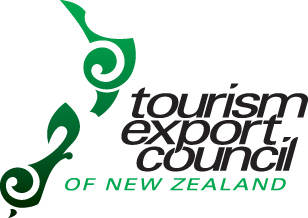INSIDE TOURISM – PRESIDENT’S REPORT “Environment”
I’ve never seen myself as a greenie and thought I’d be the last person trying to convey environment messages. But I feel very strongly that we’re on a knife edge right now. That unless we take a step back, take this stuff seriously, are willing to make a stand about protecting our environment better, there is a serious risk that a deteriorating environment will have nasty repercussions on not just how we live and enjoy New Zealand, as New Zealanders. But that New Zealand export’s (including Tourism) will become less desirable to the International markets. And that is bad news all around.
Botulism is a word nobody in New Zealand ever wants to hear again. But the recent scandal/scare highlights just how quickly bad news spreads. Although Botulism is found in soil also, Fonterra said the contamination was the result of a dirty pipe – if so – that’s a mistake, a human error – not an ecological problem. Even so the repercussions have been serious and New Zealand clean green reputation took a tumble.
What if we had a serious genuine ecological issue in New Zealand? Something not as easily fixed as replacing a pipe. After the international attention this got a few weeks ago, it bears not to think what sort of attention, a country that sells itself on being clean and green would attract if that reputation was tarnished.
Former Prime Minister Sir Geoffrey Palmer, spoke recently at the Environmental Defence Society’s national conference and stated “I think we have some pretty critical issues to face up to in the area of the environment,”
His comments came just a week after data from the Ministry for the Environment showed it was unsafe to swim at nearly two-thirds of monitored recreational sites on New Zealand Rivers – which I find just staggering.
We’ve heard other environmental experts tell us that
- New Zealand now has the highest proportion of threatened species in the world. Including 68 per cent of our freshwater fish.
- We have lost more than 90 per cent of our wetlands, 68 per cent of our ecosystems are threatened and 96 per cent of our lowland waterways are un-swimmable.
- 43 per cent of all lakes classed as polluted, mostly lowland
- In dairy farming areas, groundwater nitrate levels are rising quickly and human health is also directly impacted with an estimated 18,000 to 34,000 people annually contracting waterborne diseases
- Soils in dairy areas are reaching heavy metal contamination levels from over-fertilisation, threatening our future food security and exports
We’ve got blinders on if we don’t think the rest of the world hasn’t recognised we’re potentially on a slippery slope as well:
• A recent international comparison of environmental performance revealed New Zealand ranked 161st on per capita performance and 130th for overall impacts out of 180 countries.
• Yale University’s Environmental Performance Index for 2012 now ranks New Zealand 14th out of 132 countries – in 2006, we were No 1. The index also tracks environmental performance trends, measuring a country’s progress over the past decade – under this formula, New Zealand ranked 50th.
My point is, if we are on a slippery slope, the Tourism Industry has much to lose and we need to better advocate change – as there could well come a time when environmental slippage starts to affect the New Zealand tourism industry’s’ bottom line.
We need to make many improvements if we want to keep trading on our clean, green brand. A sobering thought for us all.

